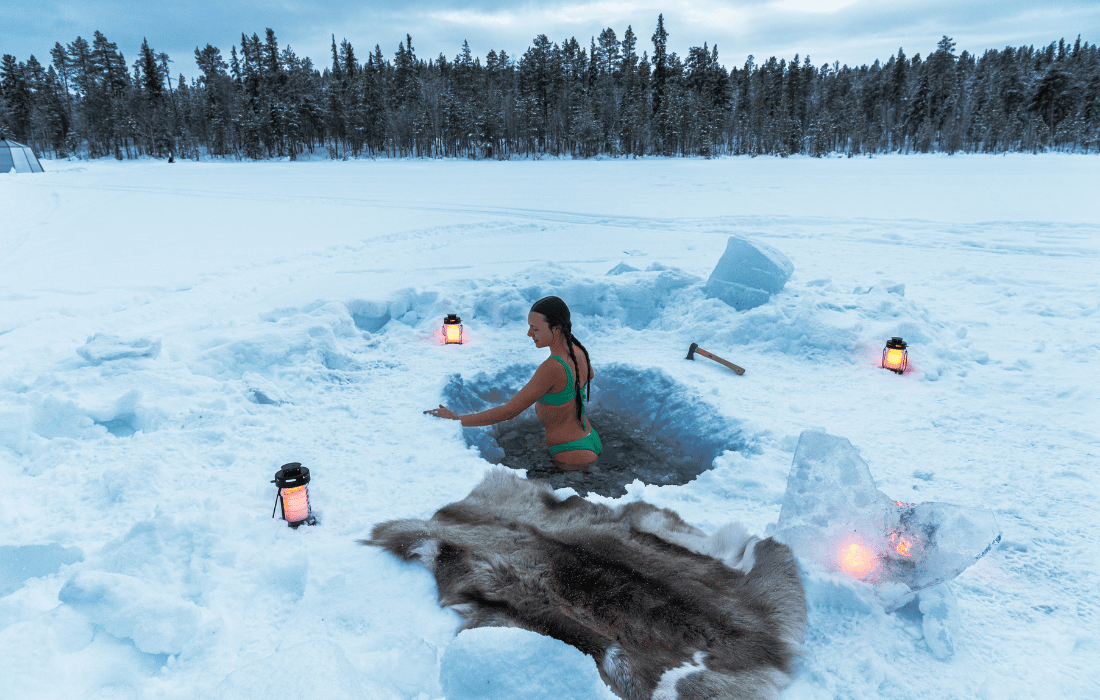In recent years, the practice of taking ice baths has surged in popularity among independent athletes, including MMA fighters, jiu-jitsu competitors, surfers, and more. This trend isn’t just a quirky new age ritual but a well-founded recovery technique backed by both science and extensive anecdotal evidence from the athletic community. Let’s dive into the chilly waters of ice baths to understand why they’re becoming a staple in the world of sports recovery and performance.
The Science Behind the Chill
First, let’s address the ‘cold’ hard facts. The principle behind ice baths, or cryotherapy, involves immersing the body in extremely cold water, typically between 50-59°F (10-15°C). This brutal-sounding practice is believed to constrict blood vessels and decrease metabolic activity, which reduces swelling and tissue breakdown post-exercise. Once out of the ice bath, the underlying tissues warm up, causing a return of faster blood flow, which helps return the byproducts of cellular breakdown to the lymph system for efficient recycling by the body.
Various studies have suggested that ice baths can significantly reduce muscle soreness after intense workouts. A 2012 systematic review found that cryotherapy participants reported up to 20% less soreness than those who did not. This effect, termed “delayed onset muscle soreness” (DOMS), is a familiar foe for many athletes, making ice baths particularly appealing.
Testimonials from the Tough
Now, onto the voices of experience. Many independent athletes have turned to ice baths as a crucial part of their training regime. For instance, MMA fighters, known for their grueling workouts and high-impact physical exchanges, often use ice baths to recover faster and reduce the risk of injuries. Fighters like Conor McGregor and Holly Holm have been known to use ice baths to manage pain and inflammation after intense sessions, helping them return to training sooner.
Jiu-jitsu competitors also share similar stories. This martial art, involving a lot of ground fighting and grappling, strains every part of the athlete’s body. Practitioners often turn to ice baths to help soothe joint pain and muscle aches, allowing them to maintain a high frequency of training sessions.
Surfers, too, benefit from these frigid dips. Given the physical demands of battling waves and maintaining balance on a surfboard, ice baths help surfers manage the wear and tear on their bodies. Big wave surfer Laird Hamilton has advocated for the benefits of ice baths in boosting recovery and even enhancing mental toughness.
A Day in the Life
Imagine a typical day for these athletes. After several hours of intense physical output, they step into a tub filled with ice-cold water, often shivering as they talk about the benefits and their regimen. The discomfort is palpable, but so is their commitment. They believe in the process because they feel the results. This anecdotal evidence, coupled with emerging scientific support, makes a compelling case for the use of ice baths in sports.
Integrating Ice Baths into Training
Integrating ice baths into an athlete’s routine isn’t just about jumping into cold water after every workout. Timing and duration are critical. The general consensus suggests a soak of around 10-15 minutes is sufficient. Any longer and the risks might outweigh the benefits, including potential nerve damage or hypothermia.
Moreover, ice baths are often just one part of a broader recovery protocol, which can also include stretching, massages, adequate hydration, and nutritional strategies to support recovery. Top athletes work with trainers to craft a holistic approach that allows them to train effectively and recover efficiently.
Beyond Physical Recovery
Interestingly, ice baths aren’t just about physical recovery. There’s a psychological component as well. The mental grit required to submerge and remain in freezing water builds mental toughness, an essential trait for athletes in high-pressure environments. This practice teaches them to remain calm and collected under stress, a transferable skill that benefits them during competitions.
The Future of Ice Baths
As research continues to evolve, so too will the protocols surrounding ice baths. With more sophisticated understanding, we might see more tailored approaches to cryotherapy, possibly involving different temperatures, durations, or combinations with other recovery methods.
The growing trend of ice baths in the world of independent sports is not just a fad but a testament to the blend of age-old wisdom and modern science. As athletes continue to push the boundaries of human performance, recovery techniques like ice baths will remain a hot topic (or should we say, a cold one?) in their training arsenals. Whether it’s the physical benefits, mental toughness, or simply the cool factor, ice baths are here to stay in the world of sports.







